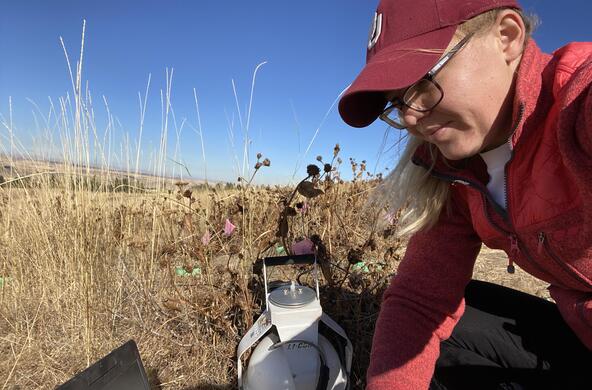For years we have focused on tailpipes and factory smokestacks as the source of global warming gases in the atmosphere. But, recently various analyses have identified agriculture as an important contributor of carbon dioxide, methane and nitrous oxide—the big three gases when it comes to human-induced changes in climate. Agriculture and forestry account for about 1/3 of greenhouse gas emissions, with on-farm activities resulting in about 1/3 of that.
To a very real extent, intensive farming is a way of converting fossil calories, largely from petroleum, into calories that we can eat. A few decades ago, we realized that for corn the energy yield was negative—we are putting more energy into the crop than we get back. But, of course, you can’t eat petroleum.
We’ve all heard that if we ate less beef, we’d reduce the emission of methane from the cattle industry. Beef and lobster top the list of foods in terms of greenhouse-gas emissions to produce a kilogram of meat—the equivalent of about 27 kg CO2 per kilogram of food. For beef, that includes methane emissions from the cows themselves, plus the emissions from all the farm activities that produce food for cows—cultivation, irrigation, fertilization, pesticides and transportation—much of which stem from the production of corn to feed the animals.
The least intensive meat is pollack (1.60 kg CO2 per kilogram of food) with chicken, pork, turkey, and lamb coming in at higher values (3.65, 5.77, 7.17 and 25.6, respectively).
At the other end of the list, we find most vegetables—the lowest of which, onions, release only 0.17 kg CO2 per kilogram of produce. It is worth noting that the production of almond (0.42) and soy milk (0.75), are lower sources of greenhouse gases than whole milk—at 1.29 kg CO2 per kilogram of food. Most vegetables are produced with less than 2.00 kg CO2 emission per kilogram of food. Melons tend to top the list as a result of the energy used to pump irrigation water.
For vegetables, cultivation, irrigation, and transportation are important sources of greenhouse gas emissions. Organic agriculture uses lower energy inputs per unit of food production, but often requires more land to compensate for the lower crop yields per area of cultivation. Normally, we don’t think about energy use as we stand in front of the vegetable displays in our local grocery.
Now I am not about to feast on onions at every meal, but there is no doubt that a vegetarian diet would have much less impact on the climate. I hate to spoil your Thanksgiving, but consider a herring (1.16 kg CO2) casserole with onions, as an alternative to roast turkey. You can still top it all off with the traditional pumpkin (0.25) pie for dessert.
References
Clune, S., E. Crossin, and K. Verghese. 2017. Systematic review of greenhouse gas emissions for different fresh food categories. Journal of Cleaner Production 140:766-783.
Elsoragaby, S., A. Yahya, M.R. Mahadi, N. M. Nawi, and M. Mirghany. 2019. Energy utilization in major crop cultivation. Energy 173: 1285-1303.
Schlesinger, W.H. 2018. https://blogs.nicholas.duke.edu/citizenscientist/how-green-is-your-milk/
Smith, L.G., G.J.D. Kirk, P.J. Jones, and A.G. Williams. 2019. The greenhouse gas impacts of converting food production in England and Wales to organic methods. Nature Communications 10






